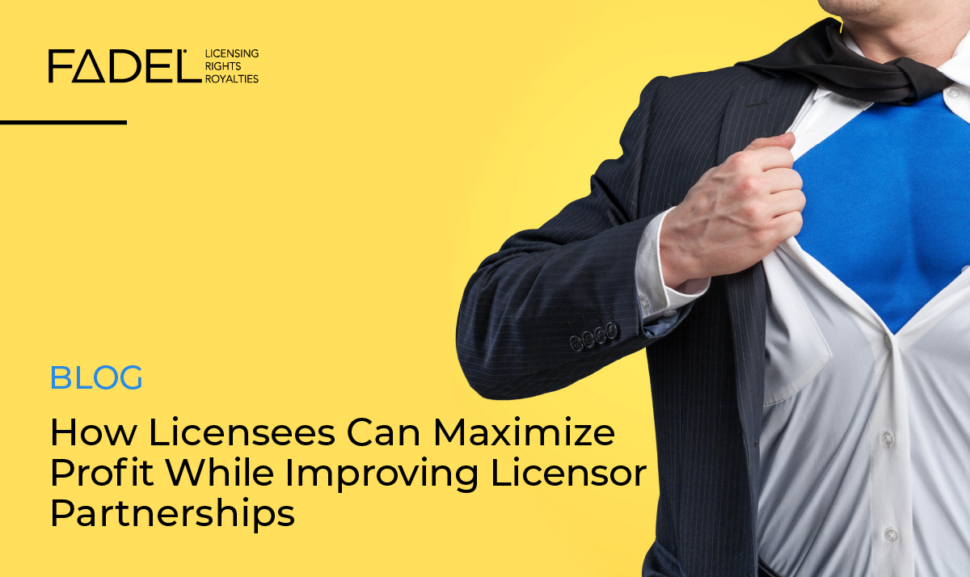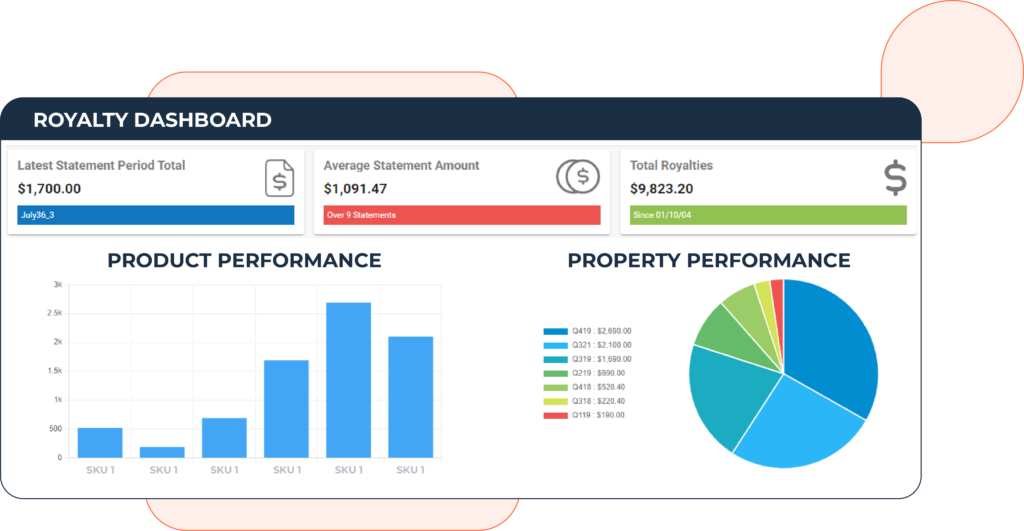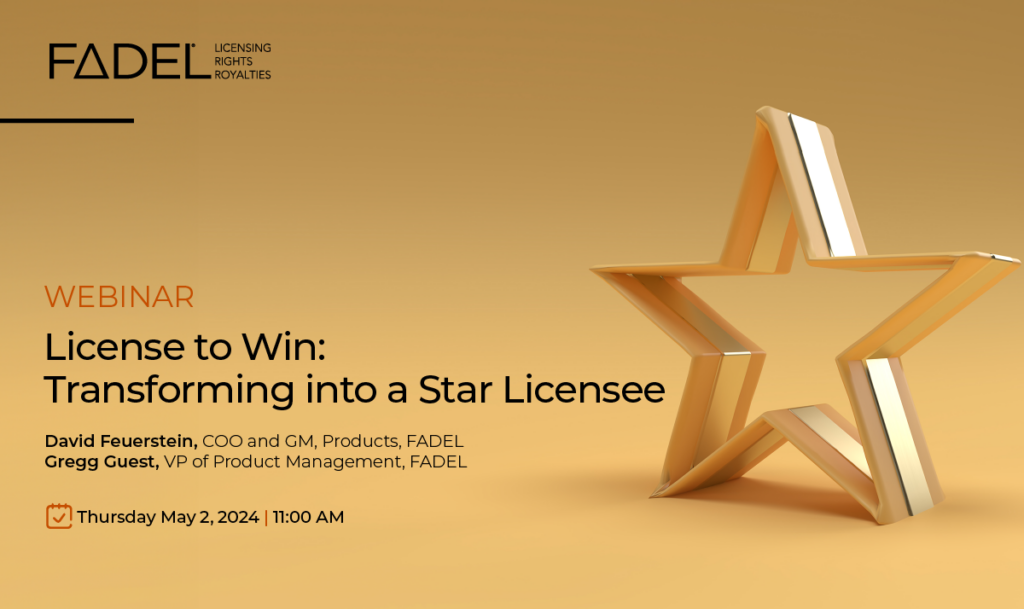
How Licensees Can Maximize Profits While Improving Licensor Partnerships
Licensing strategies can catapult merchandise of all types to the bestseller category and leveraging “hot” properties from established brands can be a game changer. Whether printing the image of a Marvel superhero on a cup or embedding soundtracks and celebrity likenesses into a video game, a licensee can turn its creative spin on a household name into significant profit.
With a lot of competition for the top properties, how can licensees differentiate themselves and demonstrate that they are best-in-class from both a creative and operational perspective?
Delivering accurate and timely royalty statements and payouts is one way to demonstrate operational excellence. Many licensees are still managing royalties using spreadsheets, which is both cumbersome and error prone. In fact, up to 90% of spreadsheets contain errors. This is why many consumer product licensees are looking to automation as a way to maximize their profit while at the same time improving their partnerships with licensors.

In this article we look at four ways to better manage licensed-in characters, brands and other properties: royalty automation, audit trails, robust reporting, and dashboard visibility.
Royalty Automation Recovers Lost Profit, Increases Cash On Hand, and Builds Licensor Confidence
Believe it or not, some of the decisions that are eroding licensee profits are intentional. The examples below are instances we have seen where licensees are leaving money on the table.
- Overpayment of royalties. Because licensees aren’t confident in their calculations and reporting mechanisms, they will intentionally overpay royalties rather than risk the legal and commercial ramifications of underpaying. One FADEL client in the high-tech space consistently overpaid royalties by 10-15%, resulting in losses of $200,000 a year—which were reduced to zero when they automated royalty payments.
- Contingency fund. A second intentional precautionary measure is keeping a contingency fund to cover up to 20% of royalty expenses in the event an audit reveals underpayment. This is actually considered by some licensees to be a “best practice” because the traditional management of royalties using spreadsheets is so inaccurate. By automating royalty calculations and payments, licensees can be confident in their payments and free up contingency cash for strategic goals.
- Missed credit for discounts, allowances, and chargebacks. This is an unintentional cause of lost profit due to inefficient processes. Some manufacturers pre-pay royalties as soon as the product ships to a retailer. As returns come in, the pre-paid royalties should be credited to the manufacturer, yet many manufacturers are unable to accurately track the credits due back to them and forfeit this revenue. Similarly, many licensees do not have a way to manage caps on discounts and allowances for returns and therefore forfeit them, losing between 5-10% in annual royalty payouts.
- Missed revenue opportunities. Licensees sometimes forgo selling product assortments or sets because they have no way to manage multiple payouts on a product sale. A scalable royalty management system automatically captures and calculates products requiring more than one payout. This allows licensees to bundle products for additional revenue opportunities.
While these examples show how automating royalty calculation is financially beneficial, there is also the intangible element of improved relationships with licensors to consider. Licensors have their pick when it comes to awarding the very best properties, so licensees demonstrating “best-in-class” royalty operations (e.g., on-time, accurate payments) are more likely gain confidence and to win new business.
An Audit Trail Protects Licensees From Costly Audits and Penalties That Exceed Royalty Rates
<Licensees are subject to audits and the burden of proof lies squarely on their shoulders. The time it takes to respond to them is rarely factored into business operations, though–and much of it is avoidable.

- Time-consuming audits. Audits can require significant manual analysis across multiple departments and resources to provide the level of detail some licensors demand, and the time it takes to satisfy these requirements is both costly and stressful. One licensee reported a level of effort of more than 200 hours over a year’s time. That’s five solid weeks of productivity lost while establishing a paper trail! An automated system with full reporting capabilities gives licensees immediate access to the data required to respond to audits.
- Hefty violation penalties. While violations are almost always unintentional, pleading ignorance isn’t going to reduce your penalty—which may be a multiple of the royalty rate. If you were to sell $100,000 worth of licensed product in an unauthorized territory at a 10% royalty rate, for example, many licensors will charge 3x the royalty as a penalty. Some licensors only perform audits every 3-5 years, meaning that on top of the $30,000 in penalties, you may also be on the hook for compounded interest over the term of the violation. And while the infraction was more than likely an oversight, violations cause bad blood between licensees and licensors, which may result in pulling rights or increasing rates.
- Recognizing licensing and royalty violations after the fact. If there is no visibility into contract terms or usage, it is difficult to get in front of violations. A system that generates violation warnings automatically when sales data conflicts with granted contractual rights eliminates the firefighting after a violation has already occurred.
So, clearly having all your data stored in a “system of truth” that can generate on-demand reports when needed can significantly mitigate the risk of an audit going south. Finally, being able to quickly respond to an audit with line-level sales detail builds trust with licensors.
Templatized Licensor Statements Save Time and Support Forecast Accuracy
Even outside of audit periods, reporting can be a resource drain. In addition to relying on error-prone spreadsheets, having to recast royalty reports into various formats unique to each licensor leaves even more room for mistakes.
- Licensor-specific reporting. Many licensors require that data be presented in a specific format, meaning licensees must manually generate each individual report according to the licensor’s guidelines. One licensee we work with generated 40-50 different reports for various licensors, which could take as much as 3 days per report to roll royalty information up into the correct format. That’s nearly half a year’s work spent on reporting alone. This time can be drastically reduced with templatized reporting. FADEL’s solution includes out-of-the-box royalty statements for Disney, Marvel, Hasbro, and Bandai Namco, as well as templates for other licensors.
- Faulty forecasting. Sophisticated reporting also serves as a valuable forecasting tool. Some licensors ask for forecasts by retail, channel, and property. This level of detail can take up to a week to prepare. Automating roll ups can reduce forecasting time to hours, and typically provides more accurate estimates. As so few licensees have the capacity to forecast well, licensors will surely take note.
Dashboard Visibility Into Contract Terms, Obligations, and Sales Protects Licensees and Informs Strategy
Summarizing contract terms into a consumable document is time consuming—and still may not be easily referenced by sales and management teams that need the information.
- Falling short on guaranteed minimums. One example of a term that can prove troublesome is a guaranteed minimum, which may be calculated by the territory, channel, or store. Without visibility into contract terms against performance, licensees risk missing the minimum threshold, leaving them liable for paying royalties on unsold merchandise. What’s more, the licensor may take back a territory or channel due to underperformance. With visibility into contract terms, financial obligations, and associated sales, licensees can track minimum guarantee commitments and push merchandise in the event the threshold is at risk of being missed.
- Inability to scale. Licensees that intend to scale their business require a platform that captures rights and payment terms and manages them against the contract. This provides much-needed visibility so that sales teams can keep an eye on commitments and avoid violations as the business grows–a level of visibility that is simply not achievable using spreadsheets.
- Lack of information. Without all of the details of your various contracts in a comparable format, it can be difficult to determine which properties and deal structures are the most profitable for your business. Analytics capabilities give licensees insights that can help them negotiate more favorable terms for the renewal period.

Introducing LicenSeeⓇ By FADEL- How an Automated, Scalable Platform Improves the Licensee/Licensor Partnership
FADEL has spent 20 years building a best-in-class platform leveraged by the world’s leading licensors and licensees. While FADEL is most known for our relationships with licensors, it is for precisely that reason that LicenSee by FADEL so skillfully manages inbound licensing as well. We know what licensors are looking for, and we’ve designed LicenSee to include all the functionality licensees need to meet their obligations. With built-in templates for “one-touch” statement generation for top licensors, automated calculations, and audit reporting, LicenSee improves licensee-licensor relationships with timeliness, accuracy, and transparency. Talk to us about how we can transform your licensing business.









